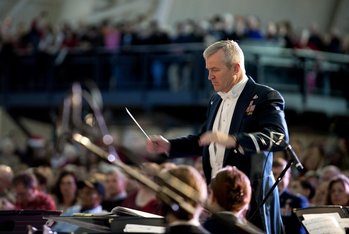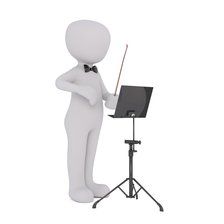 Conductors, who are also known as music directors, have a responsibility for ensuring that musicians thoroughly prepared to perform on stage. There are various types of conductors, including principal conductors, community arts leaders, and artistic directors who are employed in a variety of settings, which can range from musical theatres to opera houses. When people see conductors during a musical performance, they may think that what they do is fairly easy, but this is far from the truth. Musical directors must have a high level of skill, training, and experience in order to effectively lead an ensemble. They must also know how to command the respect of an audience. In the following, we take a look at some of the key traits that a good conductor should possess. Musical Knowledge and ExperienceIt goes without saying that a conductor should have a substantial musical background and extensive music knowledge, both in theory and in practice. In addition, a solid understanding of the choral or orchestral environment is of particular importance, as this will generally be the setting in which most conductors find themselves. Aspiring conductors are advised to study traditional orchestral performance techniques, as well as the general history of music. Given the diversity of the groups that conductors work with, it's also a good idea for them to study and master several languages, particularly French, Italian, German, and Spanish. This will not only help them in working with performers who speak these languages, but will also assist them with reading and interpreting music. In terms of the experience that is necessary to be a successful music conductor, there are several things that one should keep in mind. Experts recommend that new conductors focus on making the most of early career opportunities by engaging with their communities and proactively seek mentorship opportunities. By doing some of these things, conductors can get their names out in the community, develop a positive presence, and command greater attention. Rehearsal Techniques and Strategies Rehearsing essentially involves planning for an upcoming performance, and good conductors understand that even rehearsals themselves must be carefully orchestrated to ensure the best outcomes. While traditional rehearsals are most common, some musical directors prefer drill-style rehearsals, which require musicians to practice in short, fast-paced bursts. The walkabout rehearsal style, which is sometimes used, generally involves a conductor instructing musicians from various parts of a room. Regardless of the rehearsal style used, music directors should define clear goals for each rehearsal and clearly communicate them to each performer. If a conductor believes that there is something that will benefit the performers and help the rehearsals run more smoothly, they should be sure to let them know this, as well. Most importantly, music directors should always gauge how much their group understands after each rehearsal by performing an assessment of each person’s contributions and their overall performance as a group. In addition, they should be mindful of how much time the rehearsals take up and try to tweak the rehearsal times, if necessary. For musical directors, a solid rehearsal technique is critical in separating the good from the great. Rehearsal technique is basically the ability to organize, interpret, and arrange a performance in a creative way. A conductor’s experiences will also play a significant role in what performance techniques and strategies they employ. Many conductors are aware that they will have to adjust their rehearsal style depending on the type of group they are conducting and whether they are working with soloists or full orchestras. Podium Presence Body language is an extremely important aspect of conducting a large group of performers and serves to create a dynamic show for the audience, as well. Musical directors should strive to hone their podium presence, which is essentially the conductor’s body language. Conducting is almost like a performance within a performance, as one’s podium presence helps to convey the emotions behind the songs being performed.
In addition to posture and body language, podium presence includes the refined technique that is unique to each conductor. Comprised of consistency, rhythm, and structure, podium presence helps to tell the story of the music. Another aspect of podium presence is baton technique. A conductor’s baton is not only used for effect; it is also a valuable tool that can be used to communicate with the performers. Each conductor has his or her own distinct podium presence, and many of the world’s finest conductors are known by their trademark gestures while on stage. There is still a lot of mystery surrounding conductors and what it takes to become successful in this area. However, the most charismatic conductors understand how the combination of their stage presence, technique, experience, and rehearsal practice contribute to amazing performances. While extensive training can go a long way, many conductors have a natural ability to lead others while simultaneously entertaining crowds. Comments are closed.
|
Photo used under Creative Commons from Marina K Caprara
 RSS Feed
RSS Feed
